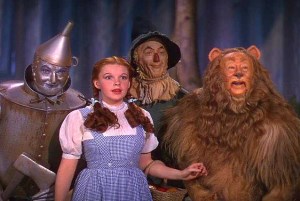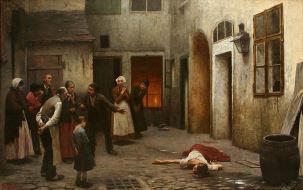أنشئ حسابًا أو سجّل الدخول للانضمام إلى مجتمعك المهني.

Following points has to be are very important for creative writing
Sentence Length: The Power Of Placing Periods—With good technique, your period placement can have a big impact on readers. Here’s how!
Repurposing Words: Surprise Your Readers With Unusual Word Choices—Craft exciting sentences by using unexpected, creative words.
Putting Verve In Your Verbs—Let’s zero in on your verbiage, or verb usage, and harness the tremendous power of active verbs!
How To Find Your Voice As A Writer—If you’re trying to find your voice as a writer, you’re not alone.
How To Craft A Great Title For Your Book (Or Story Or Poem)—A weak title can deter editors and agents before they read a single sentence of your work. Here’s how to craft a great title.
The Forgotten Fifth Sense: Are You Making Use Of This Little Used Writing Technique?—Most writers routinely use four of the five senses. Are you missing the fifth?
Be Honest: 5 Self-Editing Tips For Increased Objectivity—It can be hard to “see” your own writing as it truly is. These editing tips will help.
Mail Call: Is It Okay To Reuse Phrases From Your Own Work?—Have you written a line so perfect, you want to use again (and again)? You’re not alone. Here’s what to do.
Literary Locales: What Great Books Teach Us About Setting—Setting will be important in almost every piece you write. Here’s how to craft great, evocative settings.
Four Ways To Organize Your Writing (Or Not) Before You Sit Down To Write—Put your best foot forward each time you start writing by using these smart techniques.
The One Thing All Great Love Stories Have In Common—And What It Means To Your Writing—If you’re crafting anything with a romantic element, you must know this important writing technique.
Will Your Characters’ Love Story Stand The Test Of Time? Take Our Self-Test!—Writing a love story? Take this quiz to see if your couple’s romance will resonate.
How Important Is “Writing For The Market?”—You’ve mastered craft and technique. But what about market considerations?
You Want Me To Do What? Dealing With Agent Or Editor Revision Requests. Here’s what to do if a literary agent or editor demands a change to your writing.
HINT: Learn more about staying motivated and inspired while you improve your writing craft and technique!


Chances are your teacher or examiner will have a lot to read – so keep them interested.
With creative writing, as with any kind of writing, your reader is your most important consideration. You need to know and understand whom you’re writing for if you’re to do a good job of keeping them interested. Let’s think for a moment about the kind of person you’re writing for when you’re writing an essay and what you need to do to write specifically for them:
What all these points boil down to is the importance of keeping your reader interested in what you have to say. Since creative writing is all about holding the reader’s interest, there must be some lessons to be learned from it and techniques that can be applied within the more limited style constraints of the academic essay. We’ll now turn to what these are.

Yves Lavandier argues that, although traditionally divided into five acts, Hamlet consists of three dramatic acts.
The three-act structure is a writing device used extensively in modern writing, including for film and television dramas. These ‘acts’ aren’t as distinct as acts in a play, as one follows seamlessly on from another and the audience wouldn’t consciously realise that one act had ended and another began. The structure refers to a plotline that looks something like this:
This structure sounds all very well for made-up stories, but what has it got to do with essay-writing? The key similarities here are:

The tornado is the inciting incident in the Wizard of Oz – so to take the analogy a little further, the longer you leave your essay before you get to the point, the longer you leave your reader standing around in dull black-and-white Kansas, waiting for something to happen.
So, applying the three-act structure to an essay gives you something like this:
Using this structure keeps you focused on the central point, and stops you from waffling, because everything you write is working towards resolving your argument. The use of the inciting incident in the first ‘act’ encourages you to get to the point early on in your essay, thereby keeping the reader interested. The principles of good plot-writing are centred around the connection between different events that show cause and effect, and this central tenet of the three-act structure has obvious parallels with the way in which essays work through presenting evidence in support of arguments.
3. An attention-grabbing opening
A murder mystery novel might start with the murder and then establish the build-up in flashbacks.
An oft-spouted piece of advice in creative writing is to use an attention-grabbing opening. One way of doing this is to start with a ‘flashback’, which could disrupt the chronology of events by transporting the reader directly back to the midst of the action, so that the story begins with maximum excitement. In a murder mystery, for instance, the writer might skip a slow build-up and instead use the murder itself to form the opening of the novel, with the rest of the story charting the efforts of the detective to uncover the perpetrator and perhaps telling the events prior to the murder in a series of flashbacks. The same principle can be applied to essays, though it’s easier to use in some subjects than others.
To take an example, let’s say you were writing about how the First World War started. Rather than building up slowly with the various factors, an attention-grabbing opening could (briefly) describe the drama of the Battle of the Somme, perhaps citing some statistics about the number of men involved and killed, and quoting some war poetry about the horrors faced by the soldiers on the Front Line. Then, to introduce the purpose of the essay and launch into your argument about what started the war, a phrase such as, “It seems hard to imagine that all this began with…”. Alternatively, a rhetorical question: “But how did these tens of thousands of soldiers end up in the mud and horror of trench warfare? The story begins several years earlier, with…” It may not be the standard way of writing an essay, but you’ll certainly score points for originality and perhaps ruffle a few feathers.
4. Extended metaphors
Metaphor is used extensively in Romeo and Juliet. Film still from Romeo and Juliet (F. Zefferelli, 1968).
Creative writing often makes use of extended metaphors. For example, when Shakespeare wrote the passage in Romeo and Juliet referring to “It is the East, and Juliet is the sun!” he was using an extended metaphor. With this in mind, it’s time to revisit a point we made in a previous article about writing more original essays, in which we argued that, rather than battling on with trying to explain a complex concept in a straightforward way, it might be easier to use an analogy to convey the meaning by drawing comparisons, which people find easier to understand. A metaphor is a kind of analogy, so the similarities with creative writing are strong here. In our previous article we used the example of radioactive decay. An analogy for this is the pressure with which water escapes from a hole in a bucket. It does so exponentially, just as radioactive substances decay exponentially. In both instances, the rate of a consumptive process depends on how much there is left of whatever is being depleted, which results in an exponential rate of decay. This concept is so much easier to explain using the analogy of water flowing from a hole in a bucket, as you give your reader something familiar to visualise in order to explain a concept with which they are unfamiliar.
5. Interesting details about setting and location
Augustus lived frugally.
Another way of keeping your reader interested is to bring your essay to life with details about setting and location, just as creative writers do. Essays can become quite dry if you focus solely on the academic problems, but you can make them more interesting by peppering them with details. This may not work quite so well for a scientific essay, but it’s certainly relevant for some humanities subjects, in particular English literature, history and archaeology. For example, an essay about the Roman emperor Augustus could mention that he lived a famously modest lifestyle, quoting details from Roman writers and archaeological evidence that support this: Suetonius mentions his “low bed” (interesting because of what it says about accepted standards of Roman beds!) and coarse bread and cheese diet, and the relatively small and non-lavish remains of his house on the Palatine Hill in Rome back up the idea of his having lived a modest life.
Incidental details like these can actually prove to be more significant than you initially realise, and you can use them to build your argument; in the case of Augustus, for example, his modest lifestyle is particularly important when seen in the context of Rome’s troubled history with kings. As he gradually acquired more power and became Rome’s first emperor, he had to avoid coming across as being too ‘regal’, and the little details we know about his way of life are significant in light of this. So, not only have you brought your essay to life, but you’ve raised an interesting point, too.
6. EditingFew writers get it right first time. Once you’ve written a first draft, read through it and think about whether the order of your points is optimal and whether what you’ve written actually makes sense. It’s easy in the age of computers to chop and change – you can simply copy and paste part of your essay into another part where it might fit better, and then make minor changes to your wording so that it flows. After you’ve finished editing, have a final read through and check that you’re happy with the wording. Don’t forget to proofread to ensure that your spelling and grammar is impeccable!
7. And finally… record your ideas
Keeping a notebook to hand helps you gather good ideas when they come to you.
Creative writers swear by having a notebook with them at all times, ready to jot down any ideas that suddenly spring to mind. You can adopt the same principle for your essay-writing, because you never know when the inspiration might strike. Have a think about your essay topic when you’re out and about; you’d be surprised what occurs to you when you’re away from your normal place of study.
As you can see, there are more similarities between two apparently unrelated kinds of writing than you might have realised. It is, of course, possible to go too far with the creative writing idea when you’re essay-writing: literary devices aren’t always appropriate, and your essay still needs to retain objectivity and conform to the more formal conventions of academic writing. But there are certainly techniques to be borrowed from creative writing that will help your essays stand out from the crowd and give your teacher or lecturer a welcome break from the monotony of essay-marking.

This information from the net should help.....
I bet if you hung around on a random street corner and asked ten different passers-by how to get to the airport, they'd all give you different answers.Okay, maybe if you're lucky, they'd suggest similar routes. But they'd all use different words to say it. Even the, "Uh, don't know," answers would likely come out differently."I'm sorry, I really couldn't say.""No friggin idea.""Get a map, man."How does each of your characters talk? The answer will depend on:
All this will affect his speaking style.

Check the internet. There are many sites that could help you.


Creative writing involves the combination of attractive vocabulary, concise and complete conversation.
Add as more illustrative elements as u can for this will aid in grasping the readers' attention

I fully agree with the answers been added by EXPERTS................Thanks.



